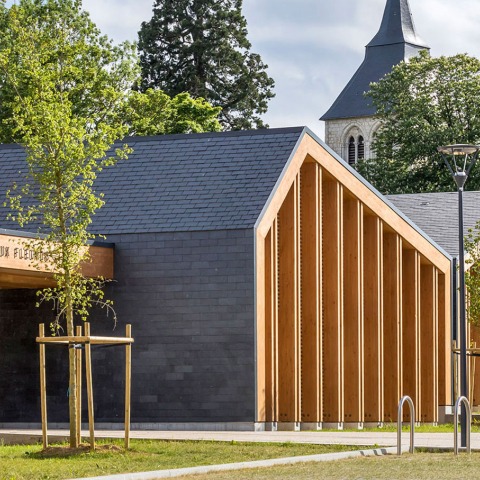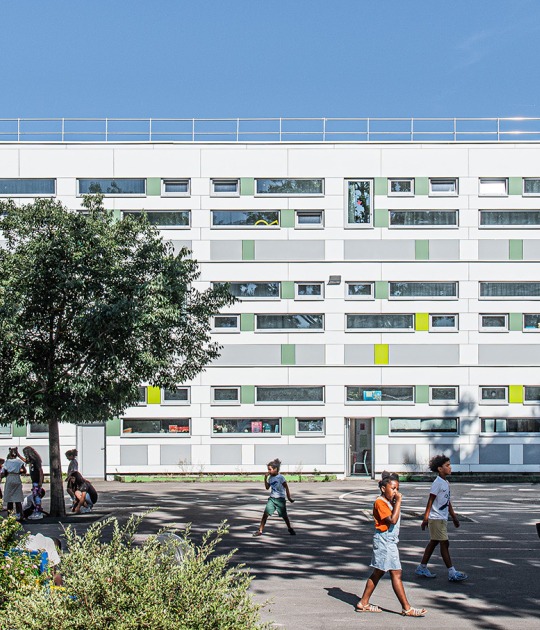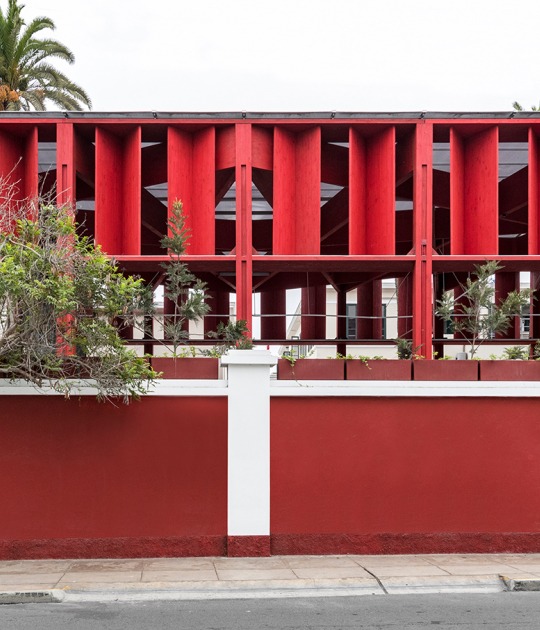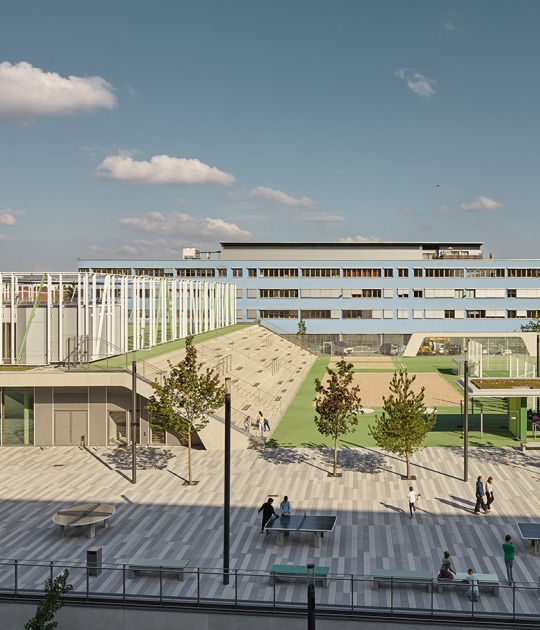Las naves tienen un armazón de madera y un tejado a dos aguas revestido de pizarra, completados con unos grandes ventanales de vidrio en los laterales y en la cubierta para iluminar su interior.
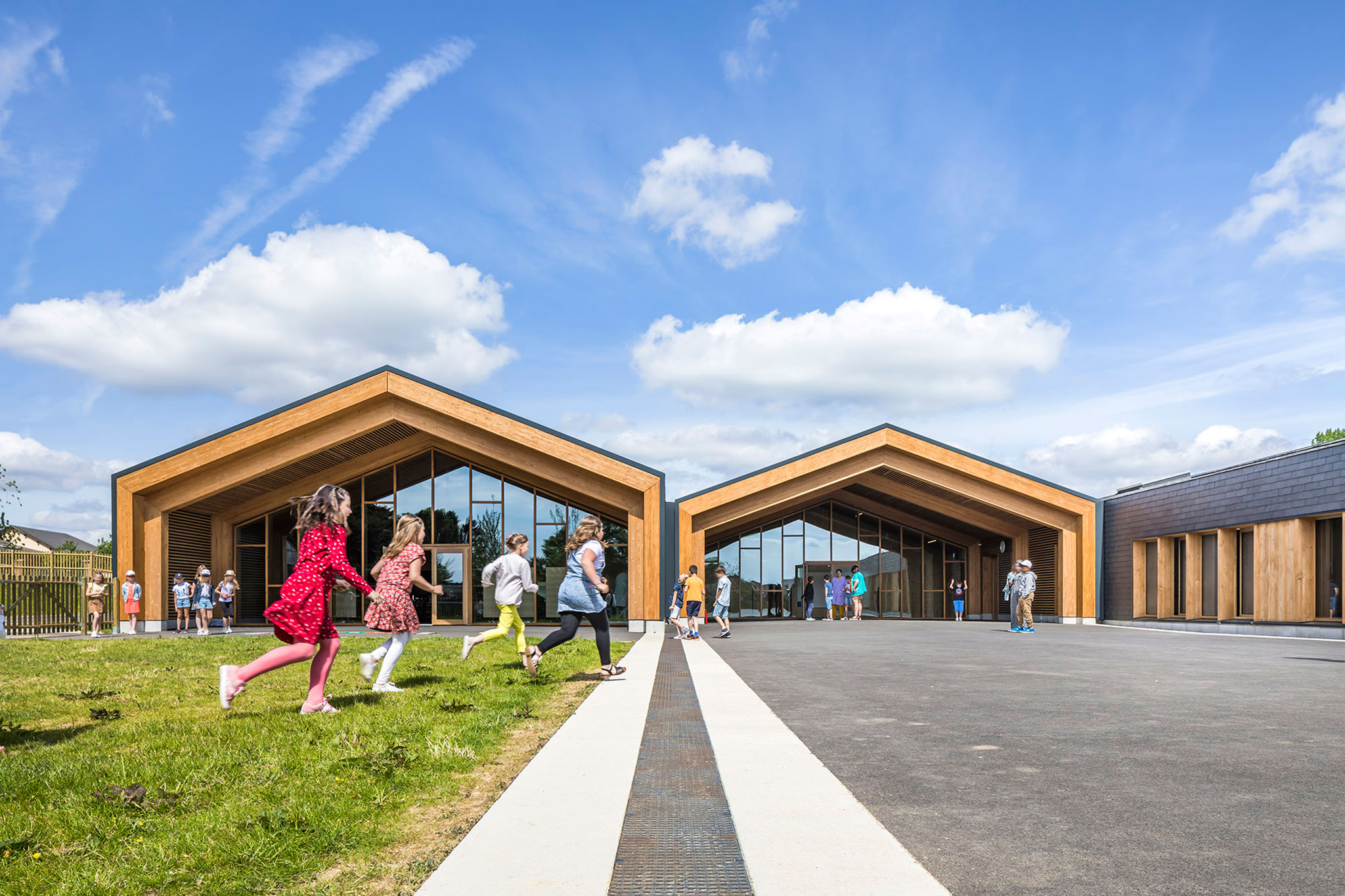
«Les Coteaux Fleuris School» por HEMAA Architectes. Fotografía por Sergio Grazia.
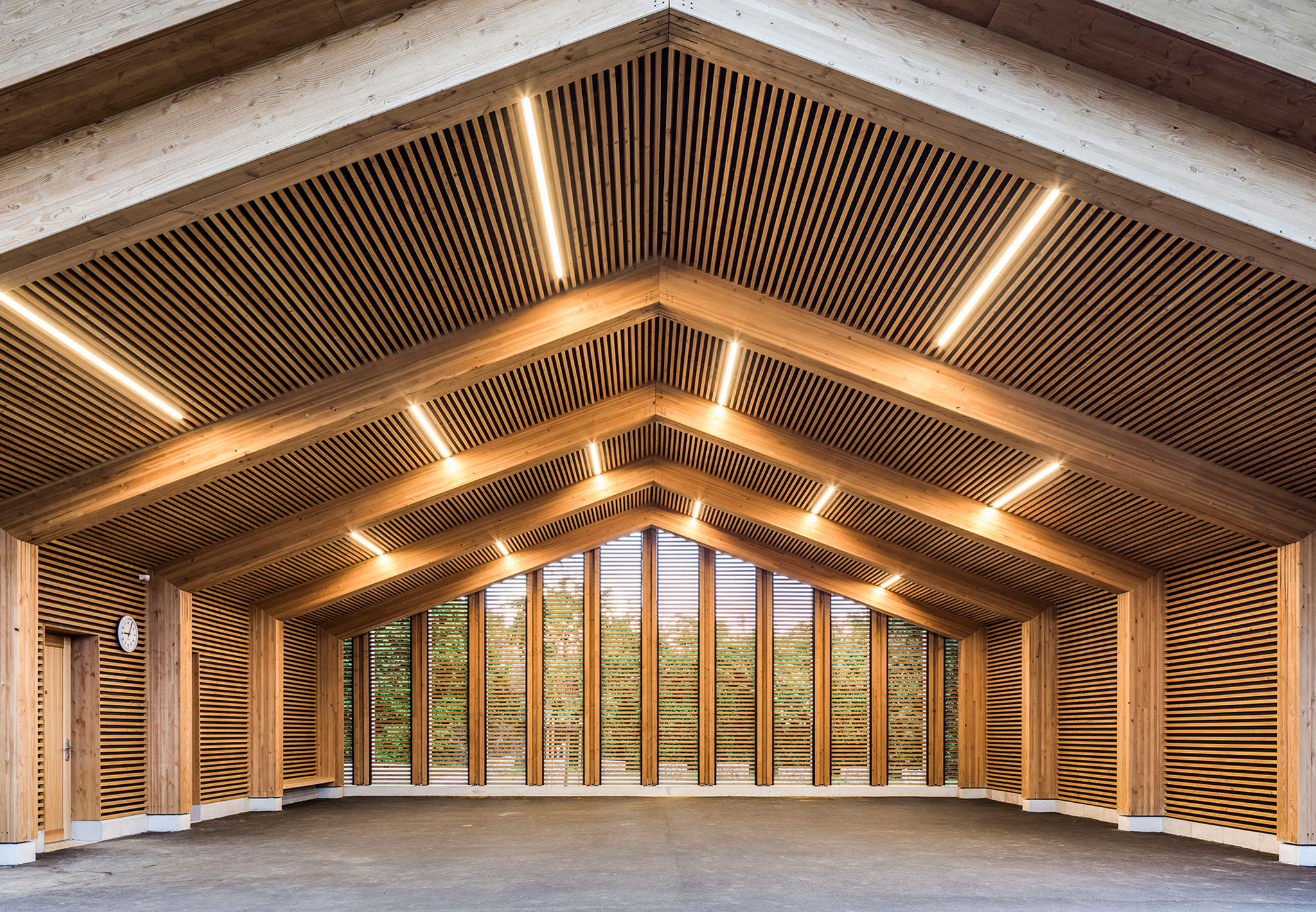
«Les Coteaux Fleuris School» por HEMAA Architectes. Fotografía por Sergio Grazia.
Descripción del proyecto por HEMAA Architectes
En un emplazamiento extraordinario cuyo telón de fondo son las laderas del valle del Sena, esta nueva escuela está adosada al pueblo normando de Heudebouville (Francia).
Un paisaje arbolado
De la historia del lugar, la escuela toma prestados los materiales y la morfología: la madera de las casas de entramado del centro de la ciudad para los marcos acristalados y el armazón; la pizarra del campanario y del ayuntamiento para revestir y proteger las fachadas y el tejado. Se reinterpreta la morfología de las casas y edificios agrícolas del emplazamiento, dando lugar a grandes «longères» contemporáneas («longère» es el nombre de una vivienda larga y estrecha, que se desarrolla a lo largo del eje de su cima, típicamente habitada por agricultores y artesanos y típica de las regiones de Bretaña y Normandía en el noroeste de Francia).
La geografía del lugar ordena la implantación de la obra, las casas se insertan según los contornos del terreno y respetan el suelo natural. Estas directrices delimitan los patios de recreo, dibujan huertos y se convierten en valles que recogen el agua de lluvia de todo el emplazamiento para alimentar una cuenca ajardinada inferior.
Anticipando el futuro
Esta organización por capas anticipa el crecimiento previsto de la aldea y la futura ampliación de la escuela, en la que cada hogar tiene la posibilidad de expandirse. Respetando la disposición original, se pueden añadir aulas, ampliar la cantina, los patios y los patios, y el equipamiento puede acoger a más alumnos y usuarios. En este sentido, las redes y los sistemas de seguridad contra incendios ya tienen en cuenta este posible crecimiento. El sistema estructural en pórticos, por la ausencia total de punto de apoyo intermedio, permite esta evolución futura y una completa modularidad de los locales. Las fachadas y la cubierta están formadas por módulos premontados fuera de la obra, que combinan estanqueidad al aire y al agua, aislamiento y estructura. Las piezas de 5x2 m, desarrolladas en 3D con el carpintero, han permitido gestionar el tiempo de construcción.
Huella de carbono
La construcción de la escuela forma parte de un proceso para reducir su huella de carbono. El uso de la madera, la pizarra, la integración de paneles fotovoltaicos y la ausencia de consumo de combustibles fósiles para la calefacción de los equipos permiten alcanzar los ambiciosos niveles E3C2 y BEPOS.
Por último, la obra se ha construido íntegramente con materiales y empresas locales establecidas en la región.
